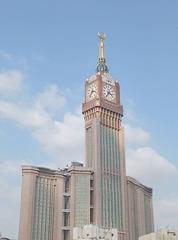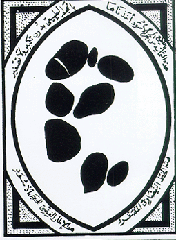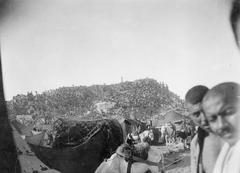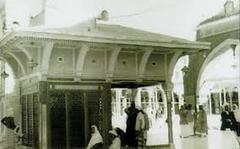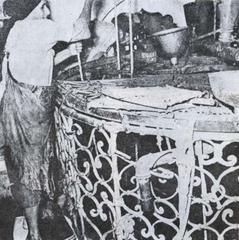Al Adl Cemetery Mecca: Visiting Hours, Tickets, and Historical Significance
Date: 04/07/2025
Introduction
Al Adl Cemetery (Arabic: مقبرة العدل, Maqbarat al-‘Adl), situated near the Masjid al-Haram in Mecca, Saudi Arabia, is a modern yet profoundly significant burial ground. Established in 1926, it reflects the evolving landscape of Mecca as the city expanded rapidly in the early 20th century. The cemetery serves as the final resting place for members of the Saudi royal family, prominent religious scholars, and renowned national figures. Its location near Islam’s holiest mosque underscores its spiritual status, with Islamic tradition emphasizing the merit of burial close to the Haram.
Although not a typical tourist destination, Al Adl Cemetery holds immense reverence for Muslims worldwide. It embodies the intersection of Saudi heritage, Islamic tradition, and national identity. For prospective visitors, understanding the site’s historical context, cultural protocols, and practical visiting information is essential to appreciating its significance fully (Wikipedia; Everything Explained Today; tripventure.uk).
Table of Contents
- Origins and Establishment
- Location and Layout
- Historical Development
- Notable Burials
- Religious and Cultural Significance
- Architectural Features
- Visitor Information: Hours, Tickets, and Access
- Etiquette and Conduct
- Nearby Historical Sites
- Frequently Asked Questions (FAQ)
- Conclusion and Key Takeaways
- Sources
Origins and Establishment
Al Adl Cemetery, meaning “Cemetery of Divine Justice,” was inaugurated in 1926 CE (1344 AH) as part of the modernization efforts following the unification of Saudi Arabia under King Abdulaziz Al Saud. Unlike the ancient Jannat al-Mu’alla Cemetery, Al Adl was developed to accommodate the growing urban population and the increasing influx of pilgrims to Mecca. Its establishment marked a pivotal shift towards organized, state-managed burial grounds in the city, reflecting the Kingdom’s new administrative and religious priorities (Wikipedia; Everything Explained Today).
Location and Layout
Strategically positioned on Majed Street, Al Adl Cemetery is within close vicinity to the Masjid al-Haram and the headquarters of the Mecca governorate (Trek Zone). Spanning approximately 50,000 square meters, it is one of the largest cemeteries in Mecca. The cemetery features organized pathways, simple grave markers, and a layout reflecting Islamic values of humility and equality.
Historical Development
Early Years (1926–1950s)
The opening of Al Adl coincided with a broader push to modernize Mecca’s infrastructure. Designed to serve the burial needs of an expanding city and to provide dignified interment for influential citizens, the cemetery quickly became the preferred site for state funerals and prominent figures (Everything Explained Today).
Expansion and Continued Use
Over the decades, Al Adl’s facilities were periodically updated to accommodate population growth and the needs of the annual Hajj and Umrah pilgrimages (Trek Zone). Its continued use for the burial of royals and religious leaders has solidified its role in Saudi Arabia’s religious and civic life.
Notable Burials
Al Adl Cemetery is the final resting place for many of the Kingdom’s most distinguished individuals:
- Saudi Royalty: Kings Abdulaziz, Saud, Faisal, Khalid, and Fahd, alongside royal family members such as Prince Nayef bin Abdulaziz and Prince Sattam bin Abdulaziz (Wikipedia).
- Religious Scholars: Influential Islamic authorities including Sheikh Abdulaziz ibn Abdullah ibn Baz and Sheikh Muhammad ibn al-Uthaymeen (Saudipedia).
- Imams of the Grand Mosque: Several former imams of Masjid al-Haram are also interred here (Everything Explained Today).
These burials reinforce the cemetery’s status as a site of national memory and religious reverence.
Religious and Cultural Significance
Burial near the Masjid al-Haram is considered highly meritorious, believed to bring spiritual blessings. Al Adl’s proximity to the Grand Mosque and its role as the burial ground for national leaders and scholars imbue it with deep religious and cultural meaning. The cemetery is also a symbol of Saudi Arabia’s custodianship of Islam’s holiest sites and serves as a venue for state funerals and religious commemorations (tripventure.uk; Saudipedia).
Architectural Features
The cemetery’s layout is characterized by simplicity and orderliness—an intentional reflection of Islamic egalitarian values. Graves are marked by modest headstones, and there are no elaborate tombs or mausoleums, in accordance with Wahhabi doctrine discouraging grave veneration. The pathways are well maintained, providing accessibility for funeral processions and visitors (Trek Zone).
Visitor Information: Hours, Tickets, and Access
- Visiting Hours: Al Adl Cemetery is generally open during daylight hours, from sunrise to sunset. Hours may vary during religious holidays and pilgrimage seasons. Confirm with local authorities or your hotel for current timings.
- Tickets and Fees: No entry fee or ticket is required. Access is primarily for funeral attendees and those visiting graves of relatives.
- Eligibility: Entry is restricted to Muslims, in accordance with Mecca’s sacred status (World History Edu). Non-Muslims are not permitted to enter Mecca or its cemeteries.
- Access: Located on Majed Street, the cemetery is easily accessible by taxi or on foot from central Mecca. Visitors should expect increased congestion during Hajj and Umrah seasons.
- Facilities: While the cemetery has organized pathways, facilities for visitors with disabilities may be limited.
Etiquette and Conduct
- Dress Code: Modest attire is mandatory. Men should wear long trousers and sleeves; women should wear loose-fitting clothing and a headscarf (Traveloka; Parrotio).
- Behavior: Maintain silence and a respectful demeanor. Loud conversations and disruptive behavior are inappropriate (Annmarie John).
- Photography: Generally discouraged or prohibited, particularly of graves, rituals, or mourners (Parrotio).
- Religious Observance: Prayers such as Surah Al-Fatiha are commonly recited; placing flowers or other offerings is generally discouraged.
- Gender Considerations: Both men and women may visit, but gender segregation may be observed during funerals or busy periods. Women are advised to be accompanied by a male relative during these times (Traveloka).
Nearby Historical Sites
- Masjid al-Haram (Grand Mosque): Islam’s holiest site, just steps from the cemetery.
- Jannat al-Mu’alla Cemetery: Burial ground of early Islamic figures and relatives of Prophet Muhammad.
- Cave of Hira: Site of the first Quranic revelation.
- Abraj Al Bait Towers: Modern complex with hotels, shopping, and the Clock Tower Museum.
Combining a visit to Al Adl Cemetery with these landmarks provides a comprehensive perspective on Mecca’s religious and historical landscape.
Frequently Asked Questions (FAQ)
Q: What are Al Adl Cemetery’s visiting hours?
A: Generally open during daylight hours; confirm locally for seasonal variations.
Q: Is there a ticket or entry fee?
A: No; entry is free.
Q: Are non-Muslims allowed to visit?
A: No; Mecca and its sacred sites are restricted to Muslims.
Q: Is photography allowed?
A: Photography is discouraged and often prohibited to maintain respect and privacy.
Q: Are guided tours available?
A: Occasionally for educational or official groups, but not typically for the general public.
Conclusion and Key Takeaways
Al Adl Cemetery stands as a prominent symbol of Saudi Arabia’s religious, national, and cultural identity. Its establishment in 1926 marked a new era in Mecca’s burial traditions, reflecting both the city’s spiritual legacy and its modernization under the Saudi state. Restricted primarily to Muslims, the cemetery’s proximity to the Grand Mosque, its notable burials, and its austere design epitomize the values of humility, reverence, and continuity.
Visitors are encouraged to approach the site with respect, adhering to local customs and dress codes, and to consider visiting nearby historical landmarks for a fuller experience of Mecca’s rich heritage. Leveraging virtual tours and digital guides such as the Audiala app can further enhance understanding for those unable to access the site directly.
Sources
- Wikipedia
- Everything Explained Today
- tripventure.uk
- Saudipedia
- Trek Zone
- World History Edu
- Traveloka
- Parrotio
- Annmarie John
- Daily Mail
- Find a Grave
- wallpaperkerenhd.com
- islamicbestworld.com
- adventurebackpack.com
For more information and updated travel tips, download the Audiala app or consult official Saudi tourism platforms. Respect local customs and the sanctity of Mecca’s heritage sites during your visit.
